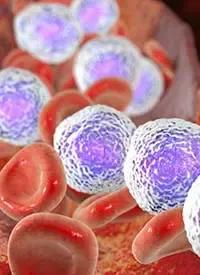Article
PAK1 Emerges as a Potential Target in Ibrutinib-Resistant CLL
Author(s):
A genome-wide look into changes in three-dimensional chromatin organization between ibrutinib-resistant and parental chronic lymphocytic leukemia cells illustrated the involvement of PAK1 as an oncogenic driver in CLL.

A genome-wide look into changes in three-dimensional (3D) chromatin organization between ibrutinib (Imbruvica)-resistant and parental chronic lymphocytic leukemia (CLL) cells illustrated the involvement of PAK1 as an oncogenic driver in CLL, according to findings that were presented at the 2021 International Workshop on CLL.1
“Together, these findings suggest the oncogenic role of PAK1 in CLL progression and drug resistance and indicate that PAK1 is a potential diagnostic marker and therapeutic target to improve treatment efficacy for patients with CLL with ibrutinib resistance,” lead study author Zijuan Wu, of the Department of Hematology at The First Affiliated Hospital of Nanjing Medical University and Jiangsu Province Hospital, in Nanjing, China, and coauthors wrote in the poster.
Ibrutinib is an effective, FDA-approved treatment for patients with CLL. However, some patients may develop acquired resistance to the agent, necessitating combination approaches.
The 3D structure of chromatin is dynamic and heterogenous across cell types and developmental stages. Maintaining the equilibrium of chromatin is a critical part of disease prevention.
An emerging body of evidence suggests that alterations in 3D genomic structures play an important role in cell development and differentiation, disease progression, and drug resistance. However, the importance of chromatin conformation in ibrutinib-resistant CLL is not well understood.
As such, investigators evaluated molecular mechanisms of ibrutinib resistance through multi-omics.
In the study, an ibrutinib-resistant CLL cell line was created by receiving increasing doses of ibrutinib. High-throughput chromosome conformation capture (Hi-C), assay for transposase-accessible chromatin with high-throughput sequencing (ATAC-seq), bulk RNA sequencing (RNA-seq), and Tandem Mass Tag (TMT) were performed to evaluate the differences between ibrutinib-resistant and parental cells.
Peripheral blood mononuclear cells (PBMCs) from 53 patients with CLL were compiled for RNA-seq. Mitochondrial respiration and glycolysis were evaluated with Seahorse analysis. The growth-inhibitory effects of the studied drugs were assessed with a CCK8 assay, and the combination index (CI), indicative of synergy, was calculated using CompuSyn software. Cell death was identified with annexin V staining.
Alterations in chromosomes, such as chr11, were seen between ibrutinib-resistant and parental cells following Hi-C analysis. PAK1, which is located on chr11 and is commonly overexpressed or
hyperactivated in most cancer types and stages of disease progression, was first evaluated for its role in CLL progression and drug resistance.
The PAK1 oncogene was found in a location where B-to-A compartment switching occurred. Similar to the results of ATAC-seq, RNA-seq, and TMT, Hi-C analysis demonstrated a transcriptional upregulation of PAK1 in ibrutinib-resistant CLL cells. Functional analysis demonstrated that PAK1 overexpression significantly promoted cell proliferation, whereas knockdown significantly suppressed cell viability. Cell viability assays also showed that the depletion of PAK1 increased ibrutinib sensitivity. Moreover, PAK1 led to a positive regulation of glycolysis and oxidative phosphorylation in CLL cells.
To confirm the sequencing findings and develop a better understand the role of PAK1 in CLL, B cells from healthy participants and PBMCs from patients with CLL were compiled. The level of PAK1 mRNA expression was significantly higher in CLL primary cells compared with B cells from healthy participants. Kaplan-Meier survival analysis of qRT-PCR data verified that patients with high PAK1 expression had a significantly lower overall survival.
Notably, IPA-3, a small molecular inhibitor of PAK1, led to dose-dependent inhibition of the growth of ibrutinib-resistant and parental CLL cells.
Furthermore, the combination of IPA-3 and ibrutinib demonstrated potent proliferative inhibition, and the CI calculated using the CompuSyn software confirmed the synergistic effect (CI <1) of the combination.
Reference
- Wu Z, Gu D, Wang L, et al. Targeting PAK1 overcomes resistance to ibrutinib in chronic lymphocytic leukemia. Presented at: 2021 International Workshop on Chronic Lymphocytic Leukemia; September 17-20, 2021; virtual. Abstract 1084202.









